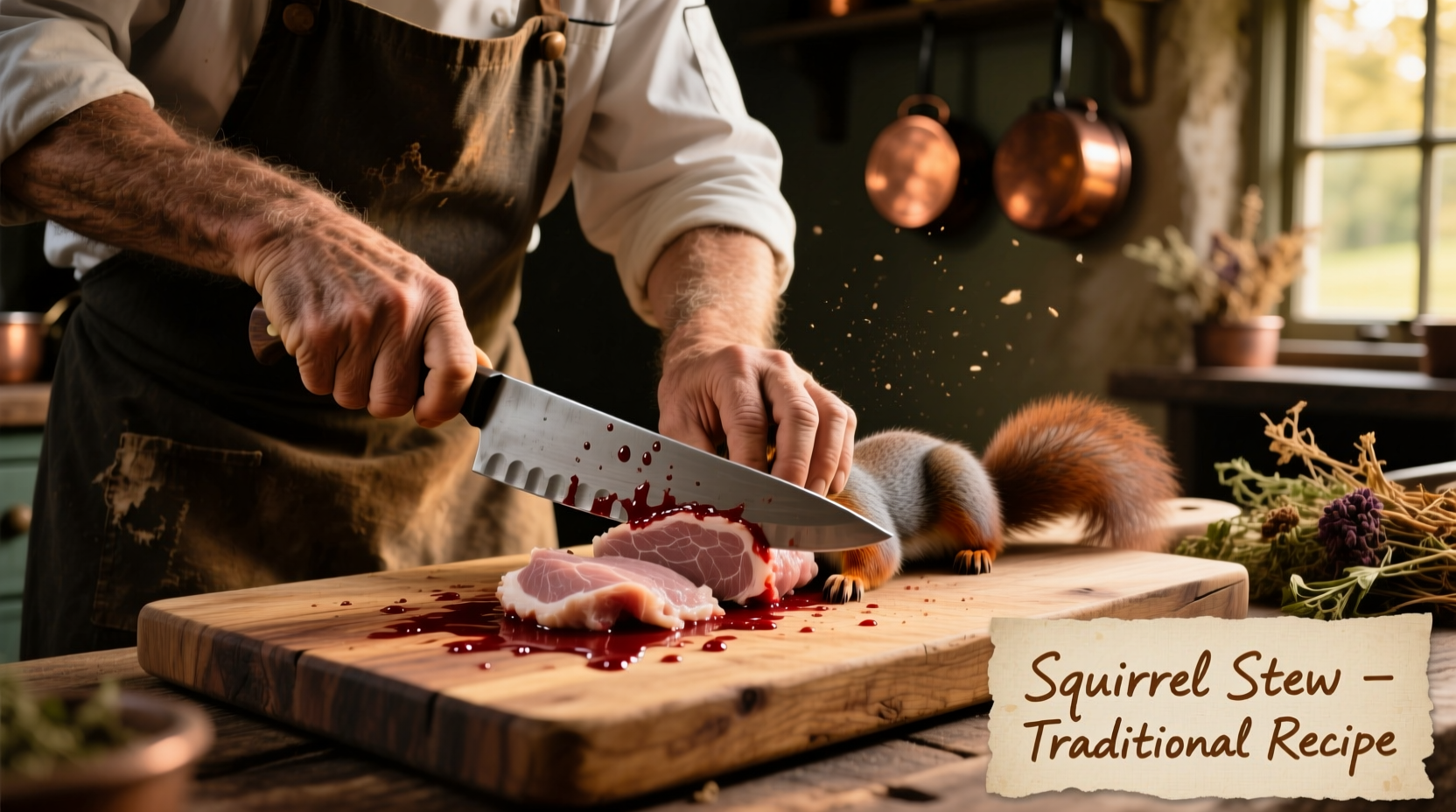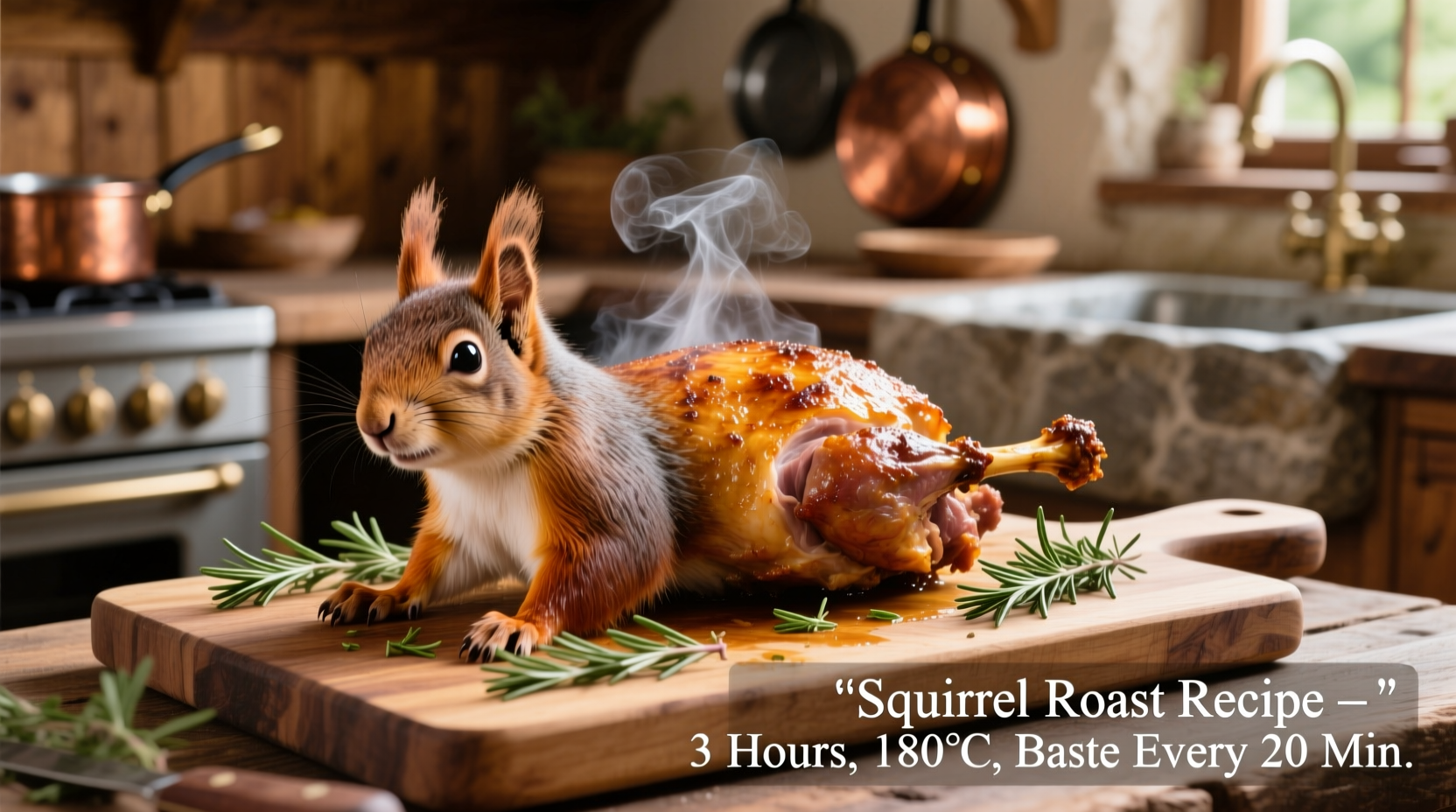Why Squirrel Meat Deserves Your Attention
Squirrel meat offers a sustainable, lean protein source with a delicate flavor profile similar to rabbit or dark chicken meat. When prepared correctly, it transforms from wild game into a tender, flavorful dish. This guide walks you through every step from field to table, ensuring both safety and exceptional results.
Essential Safety First: Wild Game Handling Protocol
Food safety must guide your entire squirrel preparation process. The USDA Food Safety and Inspection Service emphasizes that wild game requires special handling due to potential pathogens. Always follow these critical steps:
- Field dress within 2 hours of harvest, especially in temperatures above 40°F
- Wear gloves during processing to prevent disease transmission
- Remove all internal organs immediately and rinse cavity thoroughly
- Chill meat to 40°F or below as quickly as possible
- Cook to a minimum internal temperature of 160°F (71°C)
According to the USDA Food Safety and Inspection Service, improper handling of wild game can lead to trichinellosis, tularemia, and other foodborne illnesses. Never consume raw or undercooked squirrel meat.
Complete Field Dressing Procedure
Proper field dressing preserves meat quality and prevents contamination. Follow this sequence:
- Hang the squirrel by its hind legs on a sturdy branch or processing station
- Make a shallow incision from pelvic bone to breastbone, being careful not to puncture internal organs
- Separate the skin from the body cavity using your fingers
- Remove all internal organs, saving the heart and liver if desired
- Rinse the cavity thoroughly with clean, cold water
- Chill immediately in ice water for 1-2 hours before further processing

Traditional Preparation Methods Timeline
Historically, squirrel preparation follows a specific sequence that maximizes tenderness and flavor. This timeline reflects generations of traditional knowledge:
| Timeframe | Preparation Step | Purpose |
|---|---|---|
| Immediately after harvest | Field dressing | Prevent spoilage and bacterial growth |
| 1-2 hours post-harvest | Ice bath chilling | Set muscle fibers and improve texture |
| 4-12 hours refrigeration | Soaking in buttermilk or vinegar solution | Tenderize and remove gamey flavor |
| Prior to cooking | Drying and seasoning | Ensure proper browning and flavor development |
Three Proven Cooking Methods Compared
Different cooking techniques yield distinct results. Choose based on your equipment and desired outcome:
| Method | Temperature | Cooking Time | Best For | Texture Result |
|---|---|---|---|---|
| Braised stew | 325°F (163°C) | 2-3 hours | Whole squirrel or large pieces | Fall-off-the-bone tender |
| Pan-fried | 350°F (177°C) | 8-10 minutes per side | Cubed meat or small portions | Crispy exterior, juicy interior |
| Slow roasting | 275°F (135°C) | 2.5-3.5 hours | Whole squirrel | Evenly cooked, moist meat |
Classic Southern Squirrel Recipe
This traditional preparation method from Appalachian cooking transforms squirrel into a comforting meal:
Ingredients
- 1 whole squirrel, properly cleaned and cut into pieces
- 2 cups buttermilk (for soaking)
- 1 cup all-purpose flour
- 2 tsp garlic powder
- 1 tsp onion powder
- 1 tsp smoked paprika
- 1/2 tsp cayenne pepper (optional)
- Salt and black pepper to taste
- 1/2 cup vegetable oil or lard
- 1 medium onion, chopped
- 2 cloves garlic, minced
- 1 cup chicken broth
- 1/4 cup water
- 2 tbsp cornstarch
Step-by-Step Instructions
- Soak squirrel pieces in buttermilk for 4-12 hours in the refrigerator
- Combine flour and seasonings in a shallow dish
- Remove squirrel from buttermilk, allowing excess to drip off
- Dredge pieces thoroughly in seasoned flour mixture
- Heat oil in heavy skillet over medium-high heat (350°F)
- Fry squirrel pieces for 8-10 minutes per side until golden brown
- Remove cooked pieces and set aside
- In same skillet, sauté onions and garlic until translucent
- Return squirrel to skillet and add chicken broth
- Cover and simmer on low heat for 1.5-2 hours until tender
- Mix cornstarch with water to create slurry
- Stir slurry into cooking liquid to thicken gravy
- Serve hot with traditional sides like biscuits, gravy, and green beans
Regional Context and Cultural Considerations
Squirrel cooking traditions vary significantly by region. In the Appalachian region of the United States, squirrel has been a staple protein source for centuries, particularly during winter months. The University of Tennessee Extension notes that squirrel hunting and preparation remains common in rural areas where hunting is permitted.
Important context boundaries to consider:
- Squirrel hunting regulations vary by state and season - always check local wildlife laws
- Gray squirrels generally provide better meat quality than red squirrels
- Urban squirrels may carry diseases from human environments and should not be consumed
- Only consume squirrels harvested from areas free of industrial contamination
The University of Tennessee Wildlife Science publication confirms that properly prepared squirrel meat contains approximately 19g of protein per 3-ounce serving with significantly less fat than domesticated meats.
Storage and Leftover Guidelines
Proper storage ensures food safety and maintains quality:
- Refrigerate cooked squirrel within 2 hours of preparation
- Store in airtight containers for up to 3-4 days
- Freeze for longer storage (up to 6 months)
- Reheat to 165°F (74°C) internal temperature
- Never refreeze previously frozen squirrel meat
Leftover squirrel works exceptionally well in soups, stews, or casseroles. The lean meat absorbs surrounding flavors beautifully while maintaining its delicate texture.











 浙公网安备
33010002000092号
浙公网安备
33010002000092号 浙B2-20120091-4
浙B2-20120091-4